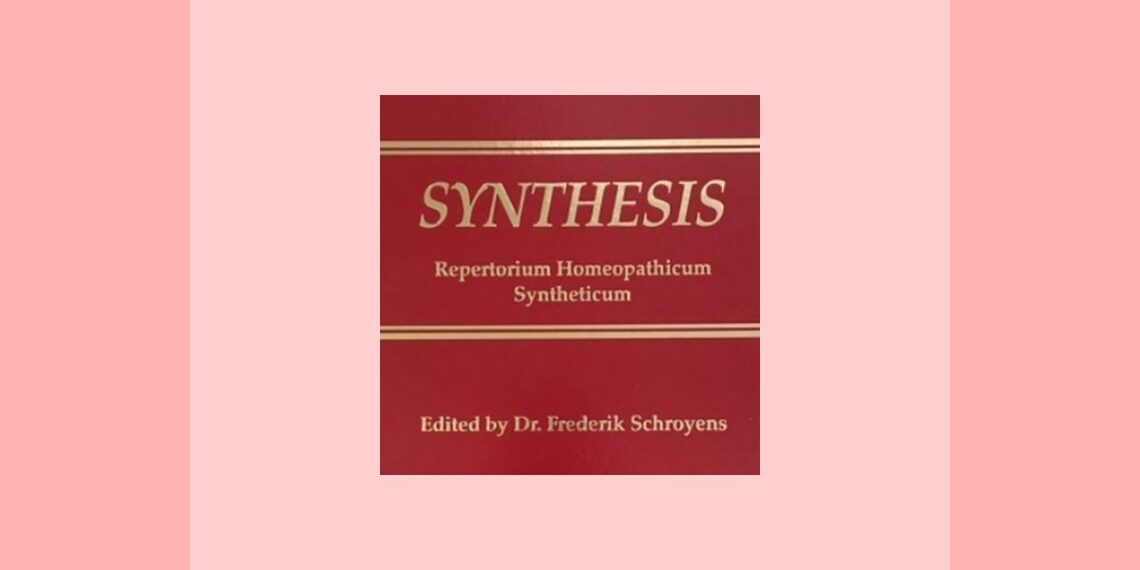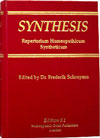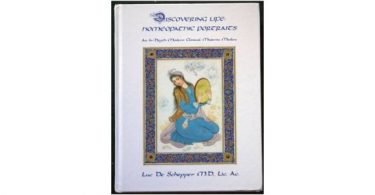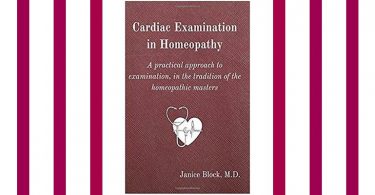Editor: Dr. Frederik Schroyens
Publisher: Homeopathic Book Publishers2002
ISBN: 1-902575-13-x. Hardcover, 2214 pages
Price: 225$
Reviewed By: Dr. Manish Bhatia
——————————————–
Synthesis has been the most favored repertories of the modern era ever since it first appeared on the horizon. The repertory which started its journey as an updated Kent’s repertory has now become so much more. Synthesis now includes information on nearly all new medicines, clinical information from a variety of established sources, data from works of Hahnemann, Boenninghausen, Boger, Phatak and many others.
The best part is that Synthesis 9.1 now comes with a utility CD which adds to the beauty of the book. While retaining the quality of the book, the print size has been reduced slightly to make the book handier. The book follows the same schema as used in earlier version but with some useful restructuring of rubrics that we will describe later. Most of the details that follows have been taken from the book itself.
What’s New in Synthesis 9.1
- All the information from the Introduction and the Mind sections of all the remedies in Boericke’s Materia Medica (br1) has been integrated (14,717 additions).
- New clinical information from André Saine (Canada) has been added to Synthesis 9 (more than 3,200 additions).
- More than 10,600 additions have been made on the basis of the popular book “Clinical Observation of Children’s Remedies” by Farokh Master (India).
- The major new remedies in Synthesis 9.0 are: Argemone pleicantha (Todd Rowe, USA); Bitis arietans (Craig Wright, South Africa); Brosimum gaudicahaude (Mateus marim, Brazil), Chironex fleckeri – box jellyfish (Alastair Gray, Australia), Bungarus fasciatus (Master, India), Coca cola (Rajan Sankaran, India), Cypraea eglantina (Anne Schadde, Germany), Desoxyribonucleicum acidum – DNA (Phillip Robbins), Dioxinum (Philip Robbins, Australia), Ficus macrophylla (Alastair Gray, Australia), Gardenia jasminoides (Regina Vale, Brazil), Hippocampus kuda – seahorse (Susan Sonz et al., USA), Lapis lazuli (Anne Schadde, Germany), Lavendula angustifolia (Clayton Collyer and Jackie Davis, UK), Melaleuca alternifolia – tea tree (Alastair Gray, Australia), Musca domestica – house fly (Susan Sonz and Robert Stewart, USA), Neptunium muriaticum (Didier Lustig and Jacques Ray, France), Ozone (Anne Schadde, Germany), Pertussis vaccine (Prakash Vakil, India), Phascolarctos cinereus – Australian Koala secrettion (Philip Robbins, Australia), Pycnoporus sanguineus – a South-African fungus (Catherine Morris, South Africa), Saccharum album (Salvador Gamarra, Brazil) and Tempestas – storm (Mary English, UK).
- Remedies described in Julian’s “Materia Medica of the Nosodes” (jl2), have been integrated such as: Colibacillinum, Diphthero-tetano-typho-paratyphoidinum, Diphtherotoxinum, Eberthinum, Enterococcinum, Flavus, Gonotoxinum, Malaria nosode, Malandrinum, Morbillinum, Oscillococcinum, Osteo-arthriticum, Ourlianum, Parathyreoidinum, Pertussinum, Pneumococcinum, Serum anti colibacillinum, Streptococcinum, Toxoplasma gondii, Tuberculinum avis, Tuberculinum denys, Tuberculinum marmoreck, Tuberculinum residuum Koch, Vaccin atténué bilié, Vaccininum, Yersinium, etc.
- The information on magnets introduced by Boenninghausen, but kept out of the Repertory by Kent, has been added back in – Magnetis polus arcticus, Magnetis polus australis, and Magnetis poli ambo.
- There are also remedies whose information has increased substantially. 197 remedies contain more than 50% extra information as compared to Synthesis 8.1V. Most remedy information has been expanded on the basis of additional author references. The most important remedies where this has occurred are: Adrenalinum, Aqua marina, Azadirachta indica, Bacillinum, Cassia sophera, Cina, Diosma lincaris, Gettysburg aqua, Heloderma, Manganum aceticum, Metylenum coeruleum, Natrium salicylicum, Ornithogalum umbellatum, Piper nigrum, Proteus, Rosmarinus officinalis (Bernard Long and P Cayrel), Strophantus sarmentosus (Stephenson), Strychninum phosphoricum, Sulfonalum, Ulmus campestris, Vanadium metallicum, Viola tricolor, and Xanthium spinosum.
Synthesis 9.1 comes with following additional new information as compared to Synthesis 9.0.
- The major new remedies in Synthesis 9.1 (not yet present in Synthesis 9.0) are: Ancistrodon piscivorus (Michael Thompson, Ireland); Bellis perennis spagyricus (Louise Deacon and Alan Ribot-Smith, England); Bothrops atrox (Michael Thompson); Chlamydia trachomatis (Richard Boocock et al., England); Heroinum (Janet Snowdon, England); Loxosceles laeta (Michael Bonnet, England); Lignum naufragium helvetiae (Mary English, England); Oxyuranus scuttellatus. Taipan snake (Paul Masci and Philip Kendall, USA); Petroleum raffinatum (Nandita Shah, India); Spectrum (Gill Dransfield, England); Taosca aqua (Anne Irwin, Ireland); Thallium (Jeremy Sherr, England) and Threskiornis aethiopica. The Holy Ibis (Elisabeth Schulz, Germany).
- 161 remedies contain more than 50% extra information as compared to Synthesis 9.0. The most important remedies are: Aesculus glabra, Bothrops lanceolatus, Calcarea hypophosphorosa, Dulcamara*, Ferrum aceticum, Glycerinum, Guaco, Indolum, Kalium sulphuricum*, Lappa arctium, Latrodectus mactans, Mentholum, Mercurius praecipitatus rubera, Myrtus communis, Naphthalinum, Pilocarpinum, Plumbum aceticum, Polygonum hydropiperoides, Quassia amara, Radium bromatum, Ruta*, Sanguinarinum nitricum, Solidago, Spongia*, Stellaria media, Strophanthus hispidus, Triticum vulgare*, Vanilla aromatica*, Xerophyllum asphodeloides and Zincum valerianicum. (The remedies marked with an “*” also contain extended proving information from Peter Friedrich, Germany.)
The CD
The most important innovation of the printed version 9.1 is that information normally reserved for the software users, has been made available with the book. It is presented on a CD and compiled into two additional volumes.
The “Textbook of Repertory Language” contains the following elements:
- The rules of Repertory Language Formatting as before, but updated.
- Explanation of the integration of the work of Boenninghausen, Boger, and the separate repertory information.
- Interesting explanations of key symptoms (symptom notes).
- Index of important changes and corrections as before but updated.
- Also included is extensive information about families, relationships of remedies, and where to get new remedies.
The second additional volume is called “Companion to Synthesis“. It contains all the information that may be helpful to find symptoms in Synthesis:
- An alphabetical listing of all Concepts, with the main remedies per concept and the related symptoms per concept.
- The chapters of some often used concepts so that related information is in the same place.
- Index of words with page numbers of rubrics in Synthesis as before but updated.
- The Companion to Synthesis, which assists you in finding information in Synthesis more easily by listing rubrics with similar meanings or themes also includes a video where Frederik Schroyens and Will Taylor discuss restructuring Synthesis 9.1 and an empty repertorization grid to repertorize your cases.
More comprehensive information about these additional volumes can be found on the CD itself. In addition, the CD contains a demo version of the Radar 9 software.
CHANGES IN STREAMLINING AND RESTRUCTURING
The change to Synthesis 9.1 addresses a problem well known to deft repertory users: much information is hidden in the subrubrics of the pain descriptions. Let’s clarify this with an example.
A patient tells you his pain in the eye is definitely better from rubbing the eye. Synthesis 9.0 offers 7 remedies with this modality in the rubric EYE – PAIN – rubbing – amel. The meaningful bit of information here is rubbing amel. The experienced repertory user knows that the EYE – PAIN section contains other symptoms which include this same modality.
These symptoms are hidden as sub-rubrics of the pain descriptions, as follows:
EYE – PAIN – burning – rubbing – amel.
EYE – PAIN – foreign body; as from a – rubbing amel.
EYE – PAIN – pressing, pressure, etc. – rubbing – amel.
EYE – PAIN – sand, as from – rubbing – amel.
These four rubrics all contain remedies whose pain in the eye is improved with rubbing. The relevance is that, if we combine these rubrics, we now look at 13 remedies instead of 7! Considering these additional remedies may increase the likelihood of choosing the correct remedy.
How has this issue been addressed in Synthesis 9.1?
In the past, for all the symptoms of the pain sections, the description of pain was always on level 3 eye – pain – burning – morning. In Synthesis 9.1 pain descriptions have been moved to the last level of the symptom. The above symptoms therefore become:
EYE – PAIN – rubbing – amel. – burning
EYE – PAIN – rubbing – amel. – foreign body; as from a
EYE – PAIN – rubbing – amel. – pressing pain
EYE – PAIN – rubbing – amel. – sand; as from
As a consequence, the rubrics containing the same modality are now positioned next to each other, on the same page or screen. In Synthesis 9.0 they were pages apart, pages that were seldom turned. This hidden information is now easily visible and usable.
This restructuring increases the number of remedy choices for thousands of modalities, sides, times, extensions, and localizations. These hidden symptoms and their remedies were hardly ever looked at before. Now it has become very easy to consider this information when necessary.
In addition, the remedies of these symptoms expressing the same side, time, modality, extension, or localization have been copied to the common super-rubric. Reverting to the example above, this means that EYE – PAIN – rubbing – amel. has 13 remedies in Synthesis 9.1 (instead of 7 in Synthesis 9.0).
In order to achieve this drastic change, it had to be preceded by another step: a thorough streamlining of all symptoms. Here is the explanation why:
The modality cold air agg. is expressed in several ways at different places in the Repertory. For example, in Synthesis 9.0:
HEAD – PAIN – cutting – cold – air agg.
HEAD – PAIN – tearing – air – cold; from
If we restructure this information, these rubrics would become:
HEAD – PAIN – cold – air agg. – cutting
HEAD – PAIN – air – cold; from – tearing
This would result in a cluttered pattern of rubrics with identical meanings, expressed in different ways. Therefore, we have streamlined the modality cold air agg. throughout the Repertory into cold – air – agg. before undertaking the restructuring.
In Synthesis 9.1 the above rubrics have become:
HEAD – PAIN – cold – air – agg. – cutting
HEAD – PAIN – cold – air – agg. – tearing
As a consequence of this streamlining and restructuring process, some familiar rubrics have undergone some changes.
First of all, the symptom level expressing the description of pain has been moved. There is only one thing to remember in order to find the new symptom location: move the “description of pain” to the last level of the symptom and you will find the symptom in Synthesis 9.1.
This applies only to pain symptoms that contain a “description of pain” (e.g. burning, cramping, tearing, etc.). Some examples:
| Synthesis 9.0 | Synthesis 9.1 |
| HEAD – PAIN – stitching – evening | HEAD – PAIN – evening – stitching |
| HEAD – PAIN – stitching – coughing, when | HEAD – PAIN – coughing, when – stitching |
| HEAD – PAIN – stitching – Forehead – extending to – Occiput | HEAD – PAIN – Forehead – extending to – Occiput . stitching |
| HEAD – PAIN – stitching – Temples | HEAD – PAIN – Temples – stitching |
Second, the streamlining may have moved a familiar rubric to a different place altogether, besides considering the first explanation above. You look for a symptom modified with air – cold, and in Synthesis 9.1 you will find it under cold – air, not under the letter “a”(ir), but under “c”(old).
It may take some time to adjust to the new streamlined modalities and locations. The advantage is that this streamlining is now consistent throughout the repertory.
Synthesis 9.1 adds more armor to the homeopathic tool-kit and makes available lot of ‘integrated’ information that will prove useful to every homeopath.







synthesis is a helping hand for finding remedies. m inquiring for its availability????
Homoeopathic Synthesis repertory, Latest edition ,Reprient & Price
Very enthusiastically I purchased this book but disappointed too much when I skimmed over the pages of this mammoth book. It is very tedious to get the exact location of required rubric. No word index, useless additional authors, unconfirmed remedies, with lot of misprints. Useless book.
Very good and informative. I nurture a desire to go for it. Many friends have recommended it. I don’t know what I should do to overcome it’s shortcomings.
Synthesis is available as a phone and/or tablet app. Unfortunately one still needs to buy the prohibitively expensive (especially when one lives in U.S. or Canada) Opus software to make do to get further confirmations. Others living in India etc get substantial discounts. Who else can afford to pay $6,000 USD and more to merely run Synthesis? My U.S. distributor, for example, can’t even answer any questions about the Kenbo Module (doesn’t know any details), and the author is impossible to contact to get more info. Bit of a mish-mash as being the ‘worlds best’ and ‘most accurate’ etc.